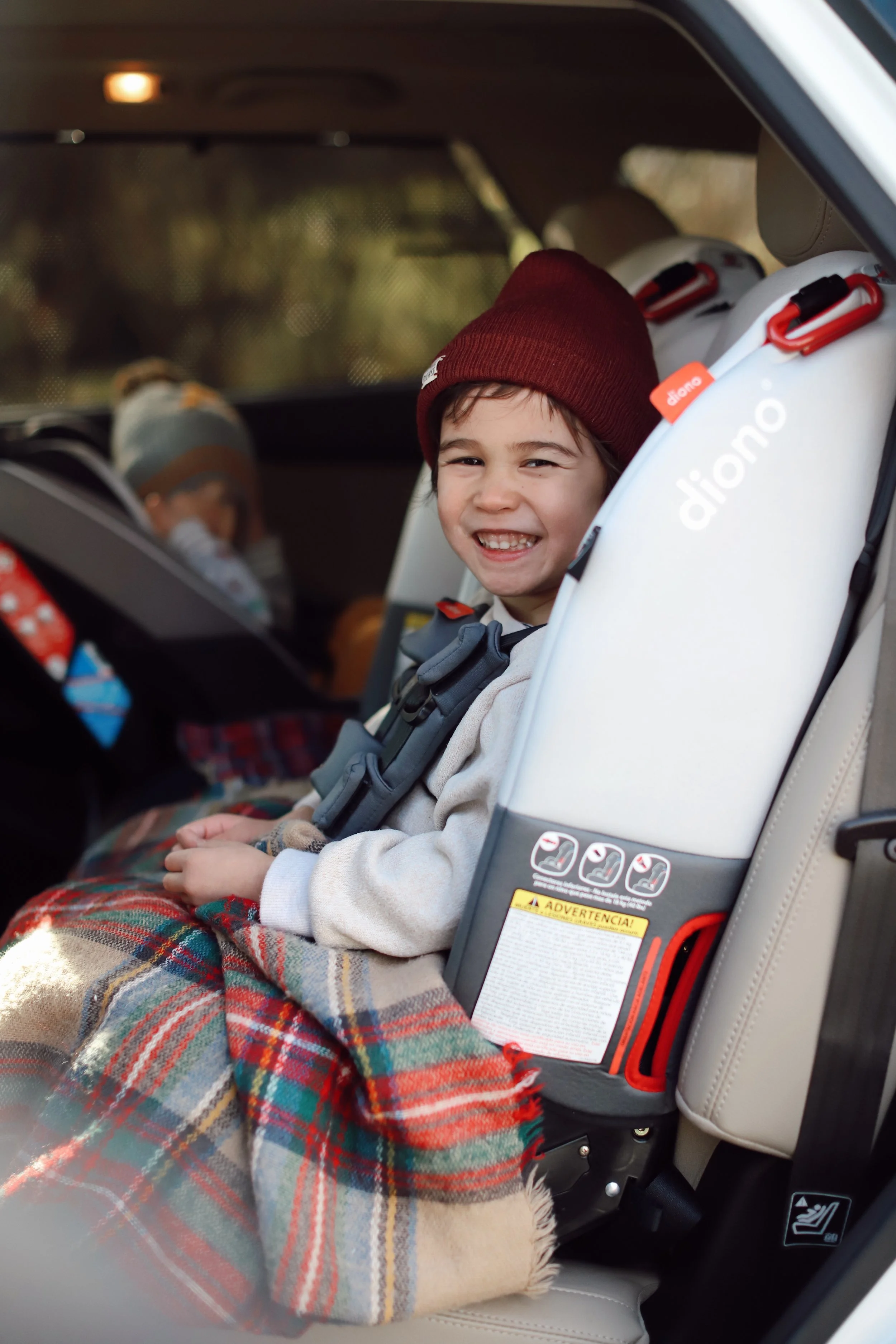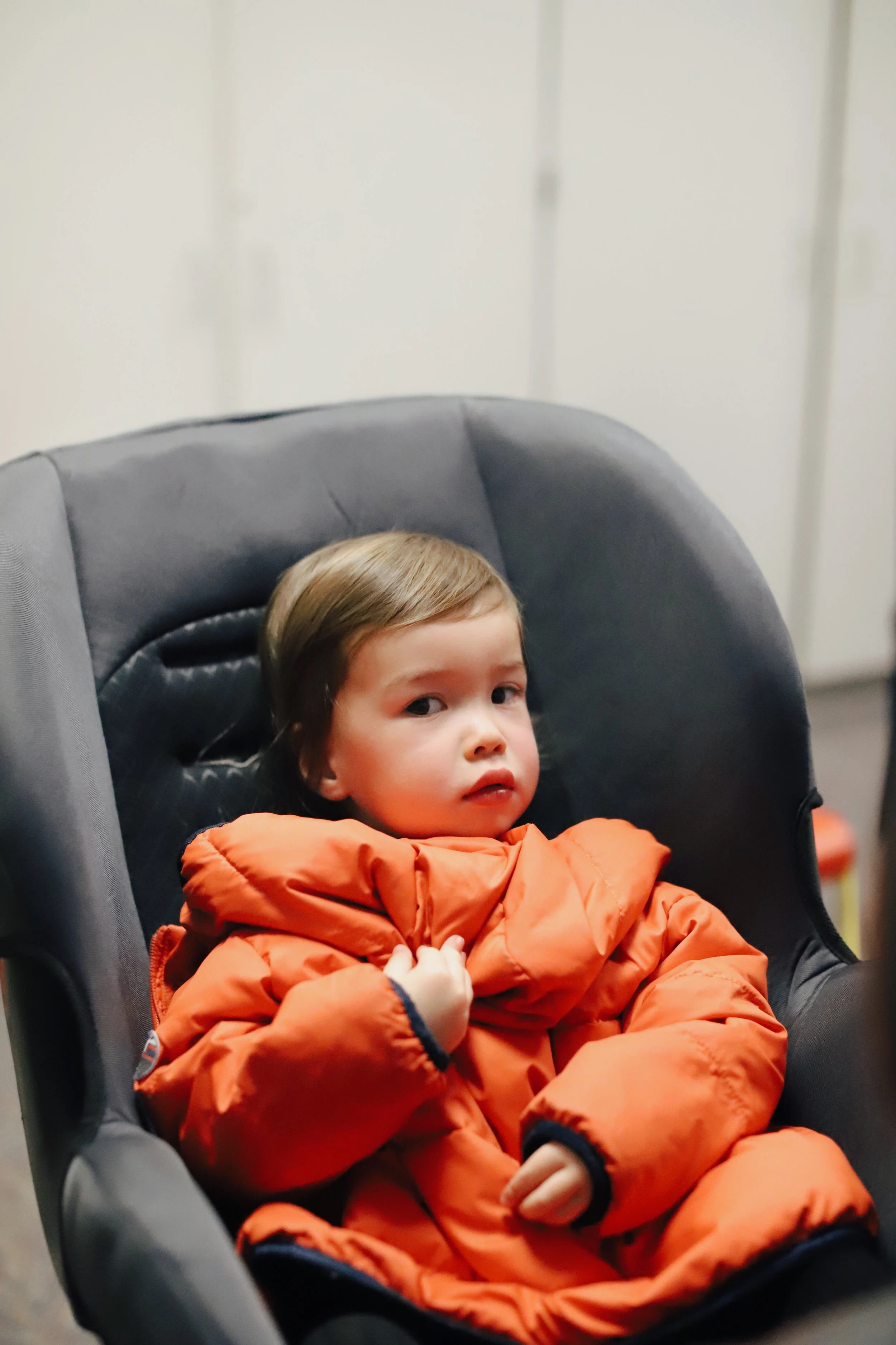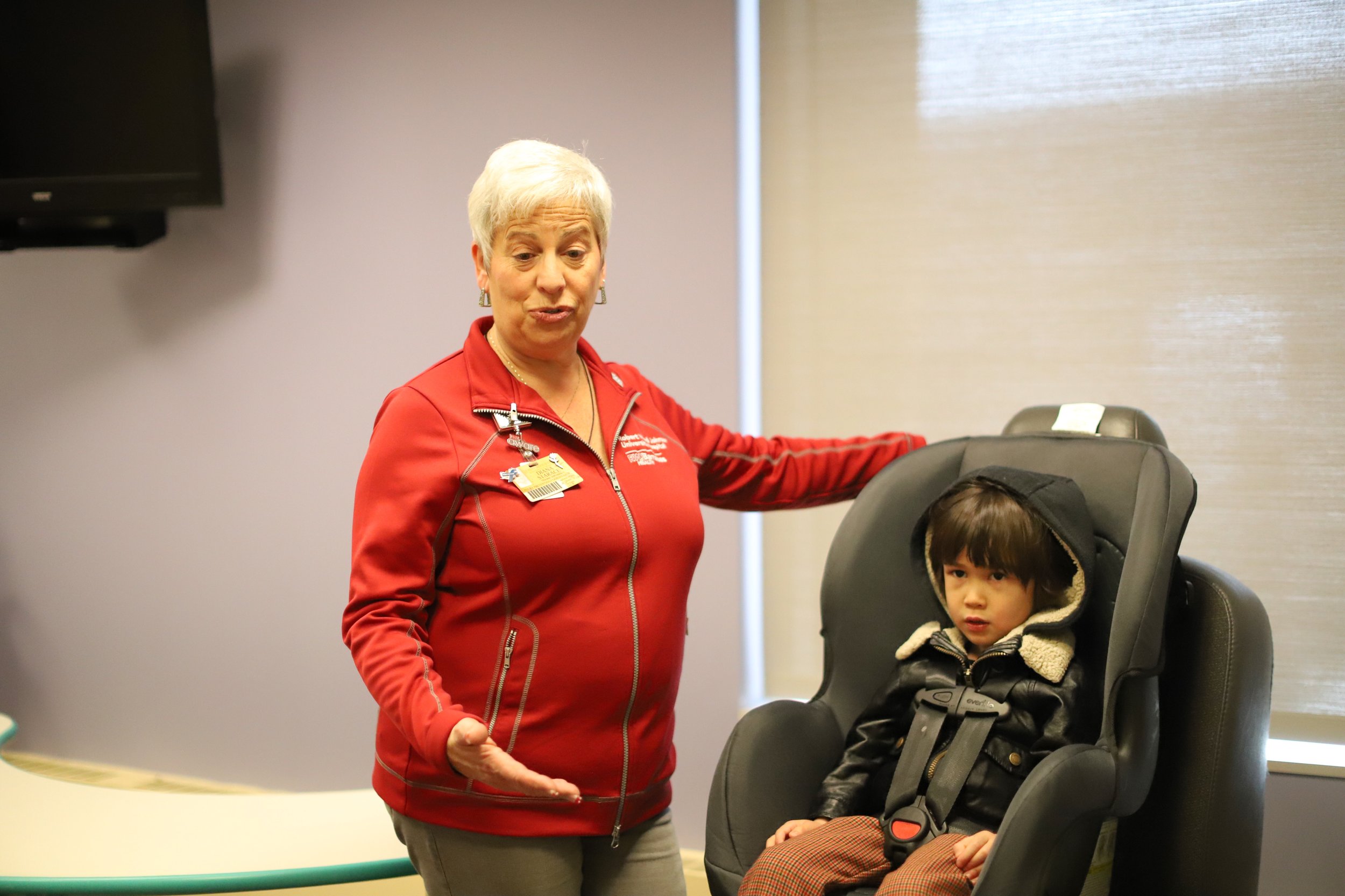Everything You Need to Know about Car Seat Safety this Holiday Travel Season
With the holidays around the corner, don’t forget to take a pause from all the busyness and make sure to keep your family safe, sound, and sane. Whether you are going to Grandma’s house or taking a longer-haul trip in the friendly skies, now is the time to plan, prepare and check off a few important safety guides before you go.
I recently had the opportunity to interview Diana Starace, Injury Prevention Coordinator at Robert Wood Johnson University Hospital Level 1 Trauma Center, on behalf of NJMOM about car seat safety and how to make sure your children are as safe as possible on every ride. Diana is also the Coalition Coordinator of Safe Kids Middlesex County (NJ), a local coalition of the global organization, Safe Kids Worldwide. With millions of Americans expected to hit the road this holiday season, now’s a good time to bust a couple common myths about car seat safety. Read on for 7 tips on how to travel safely (and stress-free) by car during the holidays and year-round, too.
7 TIPS BEFORE YOU GO
1. Safety first.
It’s always good practice to keep up with regular car maintenance, such as inspecting your oil, antifreeze, brakes and tires before you go on a road trip. But don’t forget about your car seats! Double check that they are not only correctly installed – but also being used correctly. Here’s a handy checklist:
Is your child in the right seat? Check the label on your car seat to make sure it’s appropriate for your child’s age, weight, and height. Like milk, your car seat has an expiration date – so check the label on your car seat to make sure it’s still safe to use.
Is your child facing in the right direction? Keep your child in a rear-facing car seat until at least age 2. In some states, this is required by law. Even if it’s not the law in your state, experts recommend this because rear-facing babies and small children as long as possible drastically lowers their chance of dying in a car crash.
The angle of a rear-facing seat should be tilted back at 45 degrees.
If you are rear-facing, 45 degrees is the recommended angle for tilting back. At 45 degrees, the back of the seat absorbs most of the forces in a crash. If the seat is over-reclined, those forces go to the child's shoulders and neck instead of the car seat. A quick test you can do is to fold a piece of paper at 45 degrees, make sure the bottom edge lines up with the “level” line (found on seat), and see if the recline angle matches up.
The arrow must be level with ground when used rear-facing.
When he or she outgrows the seat, move your child to a forward-facing car seat and make sure to attach the top tether after you tighten and lock the seat belt or lower attachments (LATCH). Did you know that in a Safe Kids Worldwide study, 64% of parents were not using the tether on a forward-facing seat? A forward-facing car seat secured only at the bottom may tip dangerously forward in a crash, which can result in the child’s head hitting the back of the front seat or the console. Using the tether could be the difference between brain injury or no injury at all.
Have you done the “Inch Test”? Once your car seat is installed, give it a good shake at the base. If you can move it more than an inch side-to-side or front-to-back, then it is too loose and needs to be tightened.
Have you done the “Pinch Test”? Make sure the harness is tightly buckled and coming from the correct slots. The slots which your child’s straps are coming through should be just above his shoulders. Now, with the chest clip placed at armpit level, pinch the strap at your child’s shoulder. If you are unable to pinch any excess webbing, you’re good to go.
2. Everyone needs their own restraint.
Make it a rule: everyone must be buckled every time, every ride. Diana says that most crashes happen within 10 miles of your home. You might hear some people joke about how our parents barely used car seats (or didn’t at all) when we were children and somehow, we survived just fine. Sound familiar? (My own husband says this.) Well, according to Diana, 50% more children died of unintentional injury when we were kids because of the lack of safety devices (that we have now), including car seats.
Like children, some adults need to be reminded, too! I’ll always remember an argument I had with my MIL years ago, when my in-laws were visiting one winter and I had to drive everyone to the library. They were seated on each side of my firstborn’s car seat, which was installed in the middle. As I began to drive away from my apartment’s parking lot, I asked if everyone was buckled. My MIL didn’t answer, so I looked back and saw she wasn’t. I asked her again to buckle up, and she insisted that she couldn’t reach her buckle because the car seat was in the way (utter nonsense because I’ve had plenty of other previous passengers in the same position who could buckle up, no problem). We had a disagreement over how people didn’t buckle up back then, tempers flared, and to add to my frustration, my husband was defending his mother saying it’s not required for passengers to buckle up. In order to win this battle, I produced a quick Google search of Maryland state law, which showed that all passengers are indeed required to buckle up. As the driver of a vehicle, you are responsible for everyone in it, so stay firm and hold your ground. Luckily for me, I did, as we later hit an icy patch on the road causing my car to skid.
THE WRONG WAY: Do not wear puffy winter coats in a car seat.
THE RIGHT WAY: Buckle in first, then wear jacket backwards over the straps.
3. Just say no to puffy winter coats.
In a crash, the puffiness condenses leaving a gap between the harness strap and your child’s body. What you should do: Take off the jacket first, then buckle in, and wear jacket on backwards OVER the straps.
4. If you are flying, take your car seat with you and use it on the plane.
If you can afford to pay for a seat, bringing your car seat onboard is recommended. Plus, it will be a benefit to have it with you at your destination and when you travel to and from the airport.
5. Watch out for inexperienced teen drivers in your neighborhood.
True story. My neighbor’s teenage daughter who just got her license backed their minivan into my car. Thankfully, my car was only parked and no one was in it. In the event of any accident, be sure to check with your car seat manufacturer about whether you need to replace it.
6. Avoid distractions while driving.
Diana recommends that you don’t use any add-ons like toys hanging from car seats or baby car mirrors to keep an eye on your rear-facing child. The main reason for this is because car seats are not crash-tested with add-ons and therefore we just don’t know if it is safe or not safe to use with the car seat. Also, they can be a distraction for the driver, too!
7. Secure loose objects in the car and stow away in the trunk.
Put hot foods, large gifts or anything that could fly around in a crash and cause injury in your trunk.
Thank you to Diana Starace for providing me with all the facts and helpful tips on car seat safety this holiday season. RWJBarnabas Health is the largest and most comprehensive healthcare system in the state of New Jersey and provides communities and patients with convenient access to high-quality, cost-efficient, and coordinated healthcare. Safe Kids Worldwide is dedicated to protecting kids from unintentional injuries, which are the number one cause of death to children in the U.S. Stay safe and happy holidays!
This post is sponsored by NJMOM but all opinions are my own.











